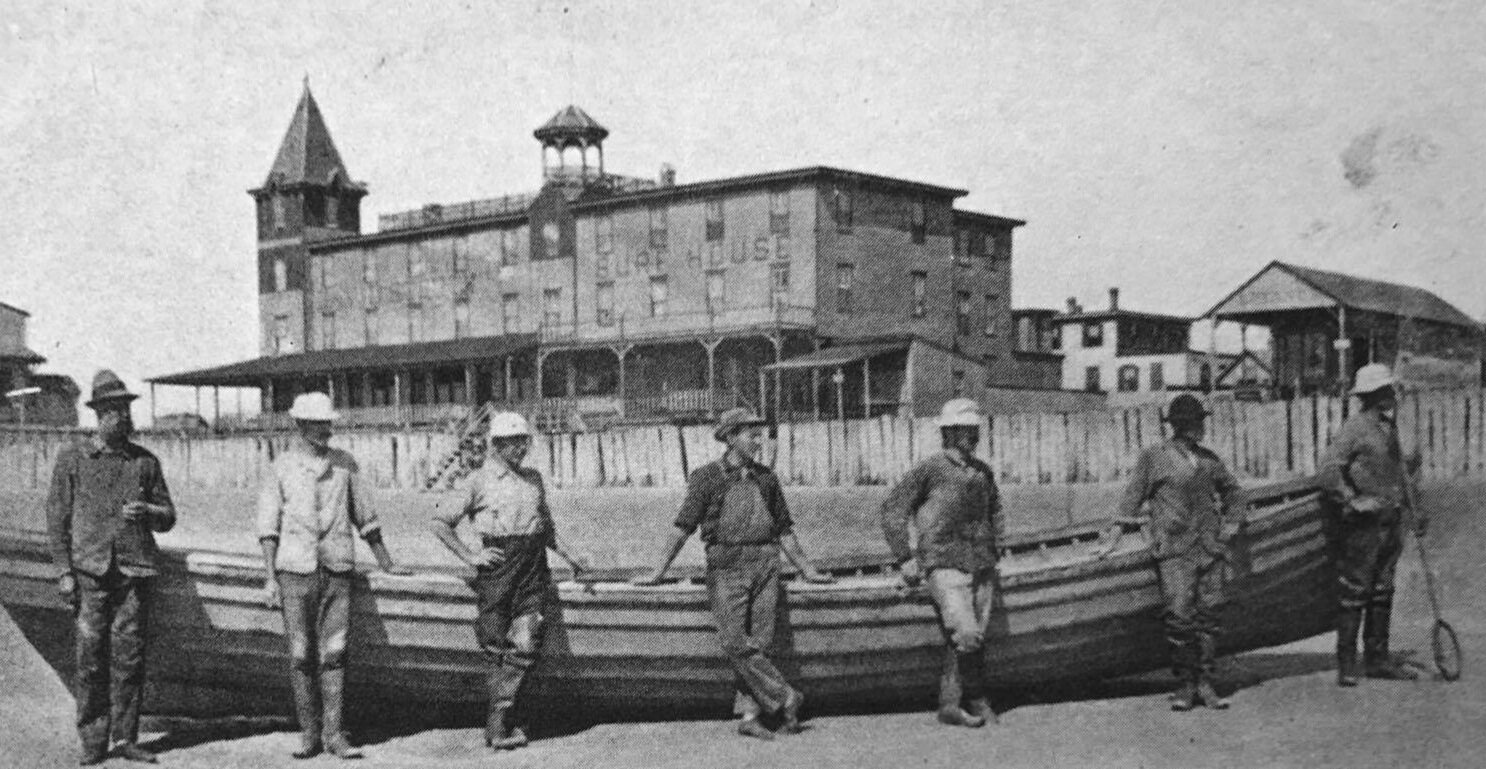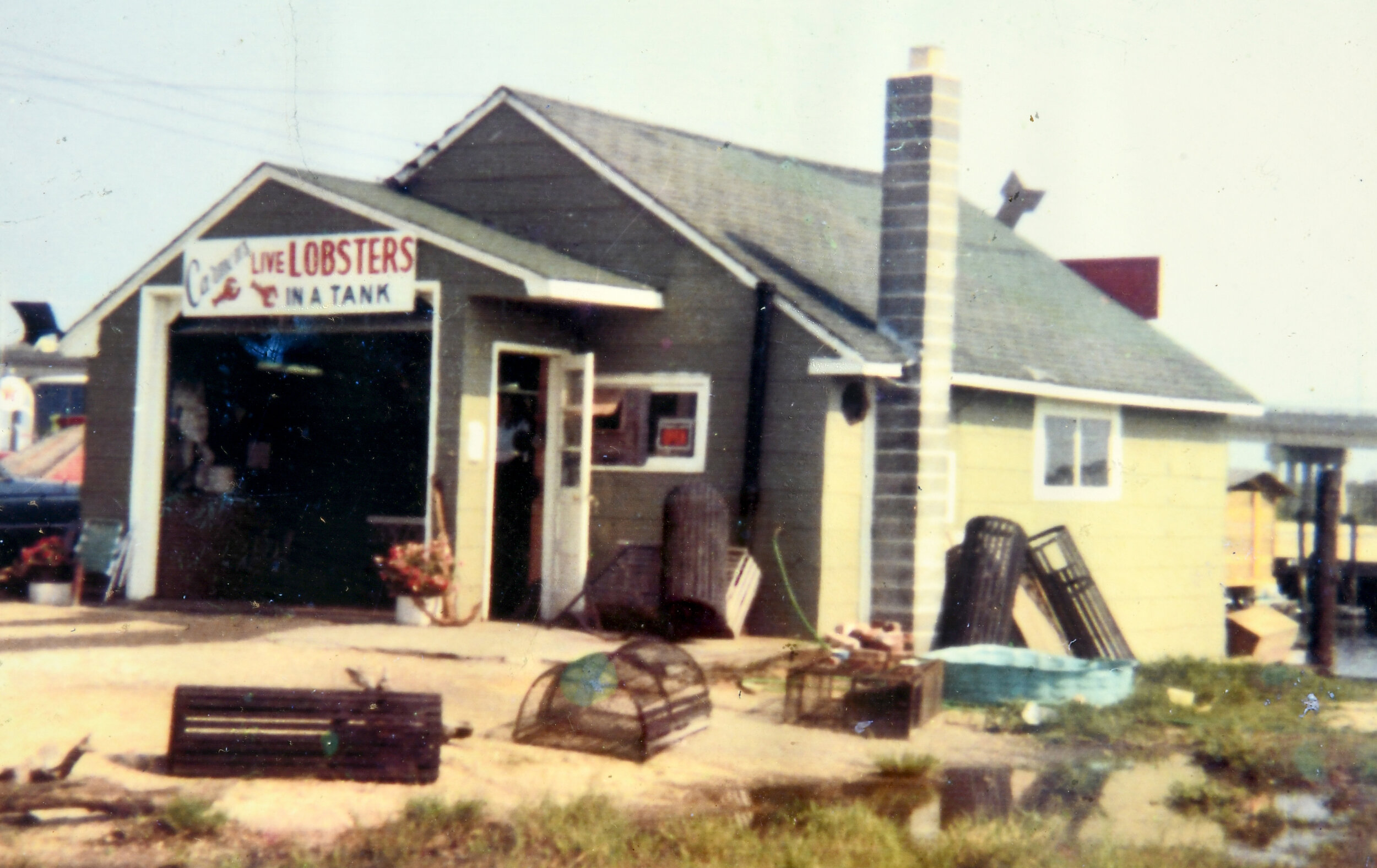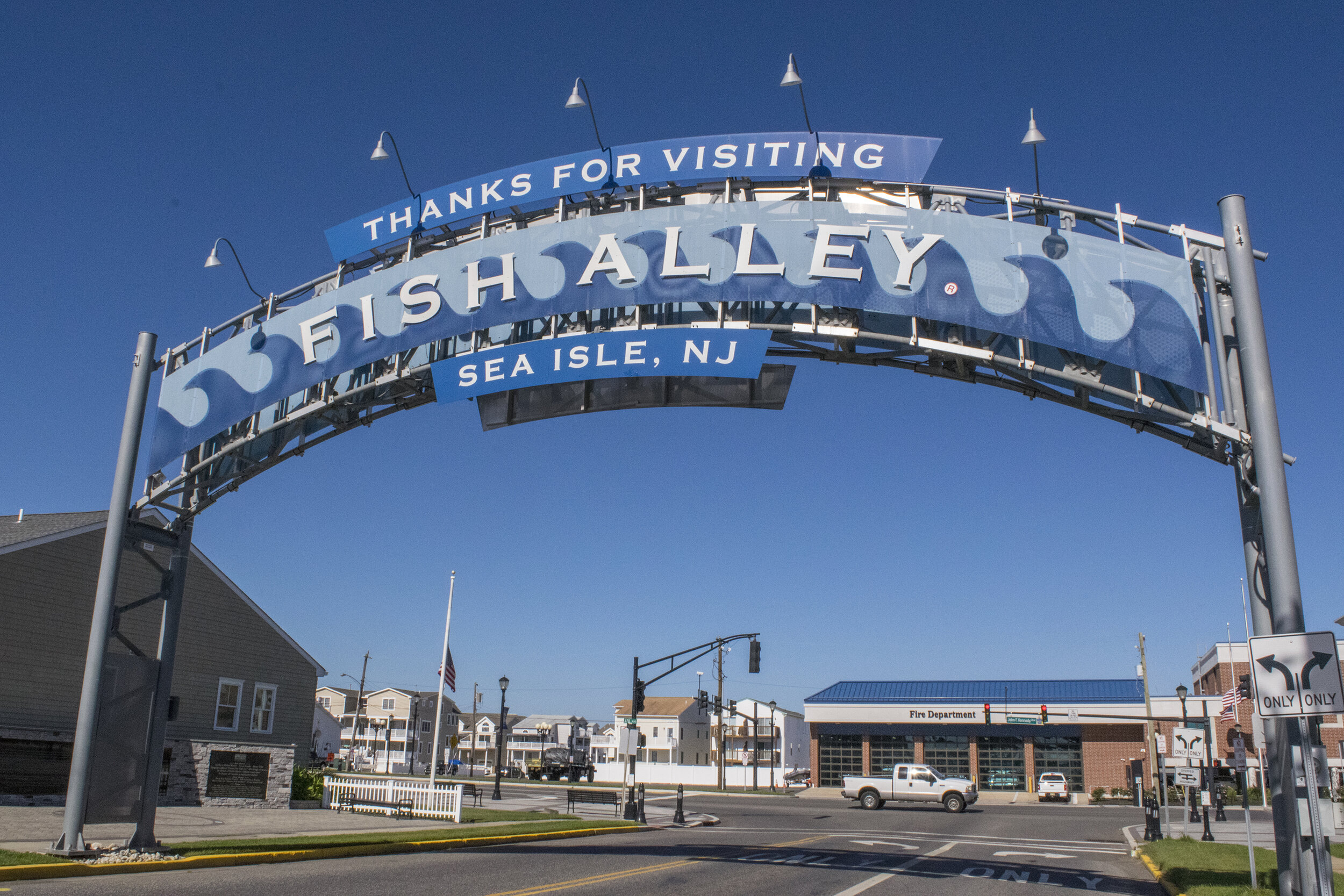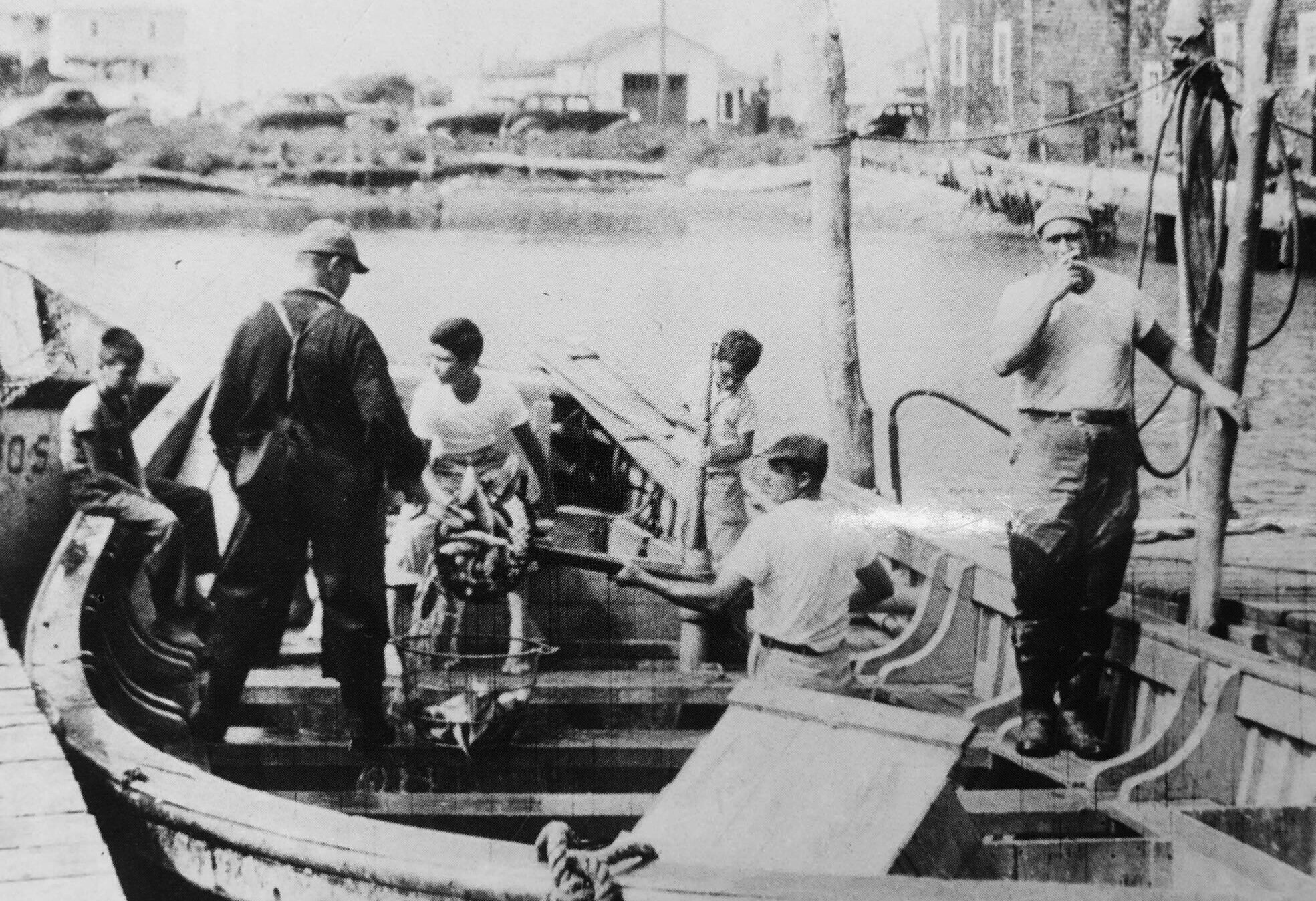How Fish Alley was Hatched
Visitors to Sea Isle City have no doubt noticed an enormous blue arch just off to their right as they enter the seashore town on John F. Kennedy Boulevard.
“Welcome to Historic Fish Alley,” it beckons.
Through that arch, which sits at the entrance of Park Road, is a smorgasbord of seafood restaurants and markets, as well as a small fleet of fishing boats. They reflect Sea Isle’s century-old fishing heritage and hard work on the water by families named Pfeiffer, LaRosa and Monachetti, among others.
Located along Sea Isle’s back bay, Fish Alley was originally called Venicean Park by founder Charles K. Landis. It reminded him so much of the canals in Venice, Italy, so say the history books, that he wanted to transform the marshy area into a replica of that unique Italian city.
Although Landis never lived to see his Venice in Sea Isle, Charles Landis Jr. fulfilled his father’s dream when he commenced dredging canals along the back bay in 1908, allowing boats to navigate its waters. Soon afterward, immigrants from Italy came to Sea Isle in search of jobs and found them on fishing boats, the newly constructed docks, and in building and repairing boats. Living conditions, however, were far from ideal, with immigrants often relegated to rickety shacks.
Fishing quickly became an important industry for Sea Isle, and it grew to be a leader in the fish exporting business on the East Coast. Daily catches were packed in ice and sent by train to New York’s Fulton Fish Market and Philadelphia’s Italian and Dock Street markets. Sea Isle became well-known for the bountiful flounder that could be caught in its waters, as well as the shellfish harvests in and near Corson’s Inlet.
During those early days, pound fishing was the most popular method of commercial fishing, first developed by Native Americans. Poles with attached nets were driven into the ocean floor to capture a wide variety of fish that swam into it. Drag fishing, in which weighted nets were dragged along the ocean bottom, and pot fishing, or traps set to catch crabs, lobster and fish, were also employed by fishermen.
Walter and Clarence Pfeiffer owned the Sea Isle City Fish Company, and Clarence operated a boat-building business as well as a hardware store out of his home, complete with fishermen’s supplies. As the pound fishing industry flourished, the Pfeiffers’ business grew.
“The prosperity of Sea Isle City’s pound net fishing companies is indicated by their constant enlargement and improvement of equipment,” noted the Cape May County Times in January 1917. “A new thirty-seven-foot boat is now being built by Clarence Pfeiffer for the Sea Isle City Fish Company. This will give the company a fleet of four boats.”
According to the Sea Isle Historical Museum, the Edward H. Dever and Sons Boatyard was another of the boat-building businesses during that period.








As the nation plunged into the depths of the Great Depression, unemployed men came to Fish Alley in search of jobs to help support their families, much like the early Italian immigrants did. Not only did they find work, but many of them settled permanently in Sea Isle.
Pasquale La Rosa opened the Shallow Water Fishing Company in 1916 after emigrating from Messina, Italy in 1907. That company later became the Union Fishing, Freezing & Cold Storage Company. In 1939, he went into business with his three sons as the Pound Net Fishing Company, which was located on the docks across the street from his Park Road home.
In a 1983 interview, Pasquale La Rosa Jr. talked about working with his father and brothers.
“We never knew what the Depression was in our house,” he said. “There were nine kids and my father married them all off and bought them houses and cars and everything from that business. When he came to this country, he had five dollars. The company that my father started [the Union Fishing, Freezing & Cold Storage Co.] had a cold storage plant there and a freezer. They used to cut the ice out of the bay and store it. Just saltwater ice to be used on the fish.”
Sea Isle’s shellfish industry was devastated in the late 1950s by a virus that destroyed about 75% of bay oysters. Pollution also ravaged clam and oyster beds, and by 1979 shellfishing was banned in a quarter of New Jersey’s waters. Its fishing catches had also receded during that time due to overfishing.
Current businesses that have long histories in Fish Alley are Mike’s Seafood (4222 Park Road), which will celebrate its 110th anniversary in 2021; and Carmen’s Restaurant (343 43rd Place), whose owners, the Conti family, trace their Sea Isle roots to the early 1900s.
Mike’s Seafood, owned by Mike Monichetti, was founded in 1911 by his grandparents Dewey and Rosina Monichetti, who immigrated to the United States from the island of Ischia, off the coast of Naples, Italy. (The surname was changed from Monachetti upon arrival at Ellis Island.) Aniello and Conchetta Conti arrived in this country from the Italian island of Ponzi.
During the 1980s, a large stretch of privately owned bayfront land went up for sale along 42nd Place, near Fish Alley’s commercial fishing docks. Thanks to a combination of municipal funds and grant money designated for preservation, the City of Sea Isle was able to purchase the land. The Sea Isle City Municipal Marina, with public boat slips that can be rented, were built thanks to this purchase.
Fish Alley is where Sea Isle’s Welcome Center is located, near the famous blue “Fish Alley” sign. Information provided at the Welcome Center can direct visitors to Fish Alley restaurants and fresh seafood markets, as well as things to do and see. And in a nod to Charles K. Landis’s original vision for the back-bay area, the Yacht Club of Sea Isle City is located at the end of Venicean Road.
For more information about the rich history of the area, the Sea Isle City Historical Museum is located not far from Fish Alley, at 48th Street and Central Avenue. Please check with the museum, as well as all other establishments, for current days/hours.

